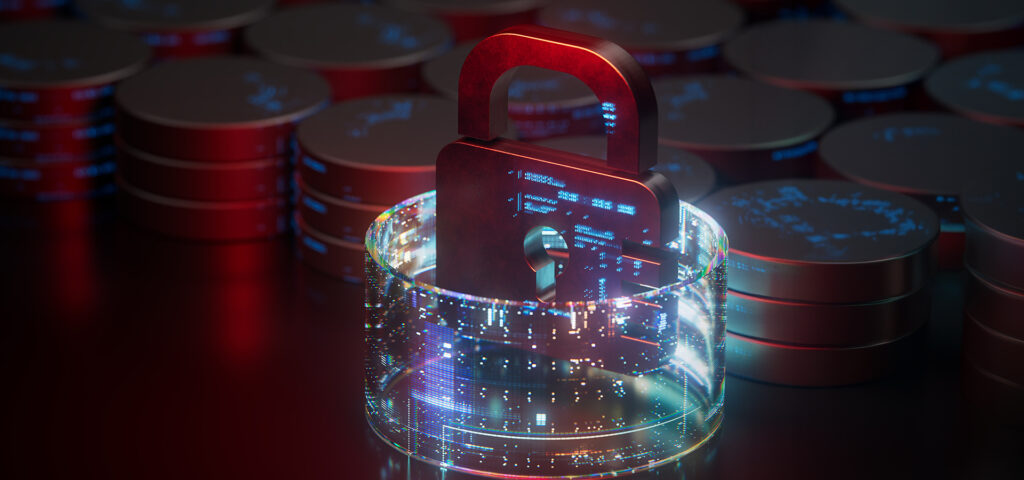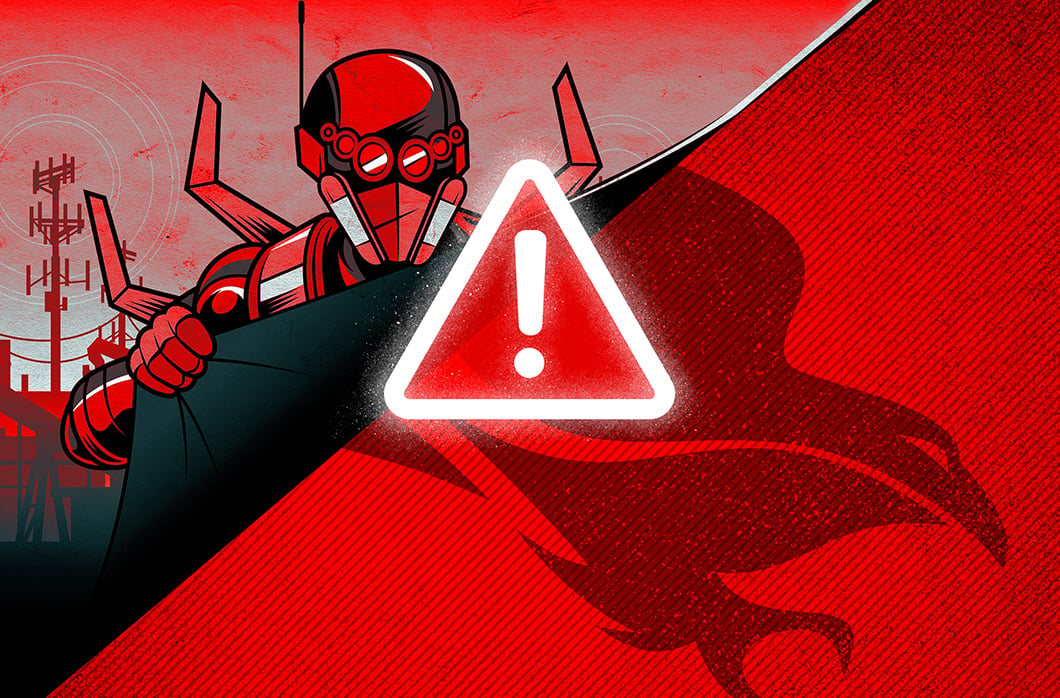DarkSide ransomware has emerged as a significant cybersecurity threat, causing havoc for businesses and organizations worldwide. In this article, we’ll dive into what DarkSide ransomware is, its origins, the damages it inflicts, and the essential measures to safeguard against it. Additionally, we’ll explore SaaS solutions provided by companies to mitigate the risks posed by DarkSide ransomware.
Table of Contents
What is DarkSide Ransomware?
DarkSide ransomware represents a sophisticated form of malicious software. It’s specifically engineered to encrypt files within a victim’s computer or network, effectively locking them away from legitimate users until a ransom is paid. Operating under the ominous umbrella of “Ransomware-as-a-Service” (RaaS), DarkSide adopts a business-like approach, offering its ransomware infrastructure on a rental basis to other cybercriminals.
This platform-as-a-service model enables malicious actors to exploit vulnerabilities in organizations of all scales. Their victims range from small businesses to large enterprises, with relative ease and efficiency. In essence, DarkSide ransomware leverages this commodified infrastructure to propagate its nefarious activities, contributing to the proliferation of ransomware attacks across the digital landscape.
How Did DarkSide Come to Be?
DarkSide ransomware emerged around August 2020. From the first day it marked its entry into the digital battleground, it had a significant impact. Originating from Eastern Europe, DarkSide is thought to have evolved into a sophisticated operation resembling a legitimate business entity. Reports indicate that its operations mimic those of a professional organization, boasting customer support services and affiliate programs. This professional facade adds a layer of complexity to DarkSide’s operations, enhancing its ability to infiltrate and exploit vulnerable targets.
The developers behind DarkSide ransomware have demonstrated a strategic focus on high-value targets, particularly within critical sectors such as healthcare, finance, and essential infrastructure. By honing in on organizations with valuable assets and sensitive data, DarkSide aims to maximize the potential gains from its ransomware activities. This deliberate targeting underscores the calculated nature of DarkSide’s operations, as it seeks to inflict significant financial and operational damage on its victims while maximizing its own profits.
The Harms of DarkSide Ransomware
The impact of DarkSide ransomware can be devastating for businesses and individuals alike. Let’s take a look at their harms and who gets the worst of them.
Financial Losses
The financial implications of a DarkSide ransomware attack can be severe for businesses of all sizes. Organizations may incur direct costs associated with ransom payments to regain access to encrypted data. Additionally, there are indirect costs related to remediation efforts, such as hiring cybersecurity experts to investigate the incident, restoring systems from backups, and implementing enhanced security measures to prevent future attacks. These expenses can quickly add up, straining financial resources and impacting profitability.
Reputational Damage
DarkSide ransomware attacks can tarnish an organization’s reputation and erode customer trust. News of a ransomware incident can spread quickly, damaging the perception of the affected organization’s ability to protect sensitive information and maintain cybersecurity hygiene. Customers may lose confidence in the company’s ability to safeguard their data, leading to a potential loss of business and market share. Rebuilding trust and repairing reputational damage can be a time-consuming and challenging process, requiring transparent communication and proactive measures to demonstrate a commitment to cybersecurity.
Regulatory Penalties
In addition to financial and reputational consequences, organizations affected by DarkSide ransomware may face regulatory penalties for failing to adequately protect sensitive information. Depending on the industry and jurisdiction, data breach notification requirements and compliance standards may impose legal obligations on organizations to report cybersecurity incidents promptly. Failure to comply with these regulations can result in fines, sanctions, and legal repercussions, further exacerbating the financial impact of a ransomware attack.
Loss of Intellectual Property and Trade Secrets
Cybercriminals can gain access to proprietary information, research data, and strategic plans by infiltrating a company’s network. Encryption disrupts ongoing operations and exposes sensitive information to potential theft. The loss of intellectual property can have long-term consequences for a company’s competitive advantage, innovation capabilities, and market position.
Furthermore, the unauthorized disclosure of trade secrets can lead to legal disputes, intellectual property theft, and damage to partnerships or collaborations with other businesses. You need robust cybersecurity measures, including data encryption, access controls, and continuous monitoring, to detect and respond to unauthorized access attempts.
As the threat landscape continues to evolve, organizations must remain vigilant and proactive in implementing robust cybersecurity measures to mitigate the risks posed by DarkSide ransomware and other emerging threats. This includes investing in cybersecurity awareness training for employees, implementing multi-layered defense mechanisms, and regularly updating incident response plans to address evolving threats effectively.
Ways to Protect Yourself from DarkSide Ransomware
Despite the evolving nature of ransomware threats, there are proactive measures that individuals and organizations can take to mitigate the risks posed by DarkSide ransomware:
Robust Cybersecurity.
Implementing robust cybersecurity practices is essential to protect against DarkSide ransomware and other cyber threats. This involves several key steps:
Regular Software Updates: Regularly updating software and operating systems helps patch security vulnerabilities that cybercriminals may exploit to deliver ransomware. Software updates often include security patches that address known vulnerabilities, reducing the risk of infection.
Deploying Security Patches: Deploying security patches promptly is crucial to address newly discovered vulnerabilities and protect systems from exploitation. Organizations should have processes in place to assess, test, and deploy patches efficiently to minimize the window of exposure to potential threats.
Utilizing Reputable Antivirus and Antimalware Solutions: Antivirus and antimalware solutions play a vital role in detecting and preventing ransomware infections. These solutions use signature-based detection, behavioral analysis, and machine learning algorithms to identify and block malicious software before it can execute on a system. Implementing robust cybersecurity practices is essential to protect against DarkSide ransomware and other cyber threats.

Employee Training and Awareness
Employee training and awareness are fundamental aspects of ransomware prevention. Organizations should educate employees about the following:
Phishing Awareness: Phishing emails are a common vector for ransomware distribution. Employees should be trained to recognize phishing attempts and avoid clicking on suspicious links or opening attachments from unknown senders. Training programs can include simulated phishing exercises to reinforce awareness and teach employees how to spot phishing indicators.
Safe Email Practices: Encouraging employees to exercise caution when interacting with email attachments and links can help prevent ransomware infections. They should verify the legitimacy of email senders, avoid downloading attachments from unknown sources, and report suspicious emails to the IT department for further investigation.
Data Backup and Recovery
Data backup and recovery are essential components of ransomware preparedness and response. Organizations should:
Maintain Regular Backups: Regularly backing up critical data and systems ensures that organizations can recover quickly in the event of a ransomware attack. Backups should be stored securely, preferably using offline or cloud-based storage solutions, to prevent them from being compromised by ransomware.
Offline or Cloud-Based Storage Solutions: Storing backups offline or in the cloud helps protect them from ransomware encryption. Cloud-based backup solutions offer additional benefits, such as automated backups, versioning, and redundancy, ensuring data integrity and availability.
Network Segmentation
Network segmentation is a proactive measure to limit the impact of ransomware attacks within an organization’s infrastructure. This involves:
Segmenting Networks: Dividing networks into smaller, isolated segments restricts the lateral movement of ransomware within the network. By segmenting networks based on business function or security requirements, organizations can contain ransomware infections and prevent them from spreading to critical systems and data.
Restricting User Access: Limiting user access to sensitive systems and data reduces the attack surface and minimizes the risk of ransomware propagation. Implementing least privilege access controls ensures that users only have access to the resources necessary to perform their job functions, reducing the likelihood of unauthorized access and data exposure.
Incident Response Planning
Developing and regularly testing incident response plans is essential to effectively responding to and recovering from ransomware attacks. This involves:
Establishing Communication Protocols: Clear communication protocols ensure that key stakeholders are notified promptly in the event of a ransomware incident. This includes establishing communication channels, defining roles and responsibilities, and ensuring that decision-makers are informed throughout the incident response process.
Identifying Key Stakeholders: Identifying key stakeholders, such as IT personnel, executives, legal counsel, and law enforcement agencies, ensures a coordinated response to ransomware attacks. Establishing communication channels and escalation procedures facilitates timely decision-making and resource allocation to mitigate the impact of the incident.
Documenting Procedures: Documenting incident response procedures, including data restoration and recovery processes, ensures a structured and organized approach to mitigating ransomware attacks. This includes documenting step-by-step instructions, contact information for key personnel, and predefined response actions to minimize downtime and data loss.
Regular testing and tabletop exercises are essential to validate incident response plans and identify areas for improvement. By proactively preparing for ransomware attacks, organizations can minimize the impact on operations and recover quickly from disruptions.
Companies Solutions to Combat DarkSide Ransomware
Several companies specialize in providing software-as-a-service (SaaS) solutions aimed at protecting businesses from ransomware threats like DarkSide. These solutions offer a range of features, including real-time threat detection, behavioral analysis, and automated response capabilities. Some notable examples include:
CrowdStrike
CrowdStrike’s Falcon is a formidable defense against ransomware attacks. It offers a comprehensive suite of cybersecurity solutions. At its core, Falcon provides robust endpoint protection, leveraging advanced threat intelligence and behavioral analysis to identify and thwart ransomware threats. Furthermore, its cloud-native architecture empowers organizations to safeguard their digital assets across a diverse range of environments, including endpoints, servers, and cloud workloads. By harnessing the power of the cloud, CrowdStrike enables proactive threat detection and rapid incident response, bolstering organizations’ resilience against evolving ransomware threats.
Sophos
Sophos Intercept X represents a cutting-edge solution in the battle against ransomware, armed with sophisticated anti-ransomware technology. Central to its defense arsenal is CryptoGuard, a proprietary feature designed to neutralize ransomware encryption attempts in real-time, thwarting file encryption and preserving data integrity.
Additionally, Intercept X incorporates exploit prevention mechanisms, fortifying organizations’ defenses against ransomware delivery methods and other malicious exploits. Through its multifaceted approach, Sophos Intercept X equips organizations with the tools they need to detect and mitigate ransomware threats before they can inflict harm, safeguarding critical assets and preserving business continuity.
Cynet
Cynet offers a comprehensive breach protection platform tailored to combat ransomware attacks and other cybersecurity threats. At its core, Cynet’s autonomous platform integrates endpoint security, network analytics, and deception technology to provide unparalleled visibility into network activity and detect ransomware attacks in real-time. By leveraging advanced analytics and machine learning algorithms, Cynet enables organizations to identify ransomware threats at various stages of the attack lifecycle, from initial infiltration to data encryption.
Furthermore, its deception technology lures and deceives ransomware actors, thwarting their attempts and providing organizations with the opportunity to respond swiftly and effectively. With its holistic approach to ransomware defense, Cynet empowers organizations to proactively defend against emerging threats and safeguard their digital assets with confidence.
In conclusion, DarkSide ransomware poses a significant threat to organizations worldwide, with potentially devastating consequences for victims. By implementing robust cybersecurity practices, raising awareness among employees, and leveraging SaaS solutions from reputable providers, businesses can enhance their resilience against ransomware attacks and safeguard their critical assets from exploitation.
For more similar blogs, visit EvolveDash today!
FAQs
- How does DarkSide choose its targets?
DarkSide often focuses on larger companies that are more likely to pay high ransom amounts. They avoid attacking certain countries, mainly in Eastern Europe, based on language and location filters in their code.
- What happens if a company doesn’t pay the ransom?
If the ransom isn’t paid, the attackers may leak or sell the stolen data. They may also contact customers or partners to pressure the victim further.
- Is it legal to pay a ransom to cybercriminals?
In many countries, paying a ransom is not illegal. However, it can raise ethical issues and sometimes violate government rules, especially if the attackers are linked to sanctioned groups.
- Can DarkSide ransomware infect cloud services?
Yes. If cloud services are not properly secured, attackers can access and encrypt cloud-based files just like local ones. Weak credentials and misconfigurations increase the risk.
- What should a company do immediately after detecting a ransomware attack?
Disconnect affected systems from the network, alert the security team, avoid rebooting systems, and report the attack to relevant authorities. It’s also key to begin incident response and recovery processes right away.



















